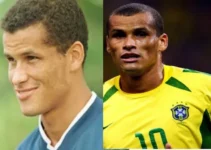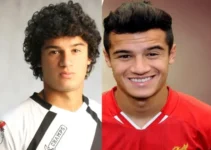Generations to come will surely want to hear the incredible story of Pelé, a name that stands as one of the greatest in football history. It’s nearly impossible to discuss the greatest footballers without mentioning him. While many fans know Pelé as the sport’s all-time leading goal scorer, few are familiar with the hidden chapters of his life that reveal his true character.

Inside Pele’s World: The Man Behind the Football Myth.
Pelé, born Edson Arantes do Nascimento, is synonymous with football greatness. Hailing from Três Corações, Brazil, his journey—from kicking makeshift balls to becoming a global ambassador for the sport—showcases his extraordinary talent and resilience. This biography aims to explore the life of Pelé, highlighting the challenges he faced, the milestones he achieved, and the significant impact he made both on and off the pitch.
We present the complete narrative of a football legend affectionately known as the “Black Pearl.” This version of Pelé’s biography uncovers his untold childhood story and shines a light on key moments from his early years leading up to his rise to global superstardom.
Pele’s Childhood Story – Early Life and Family Background:
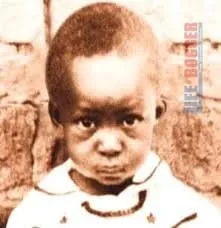
This is Pele as a kid.
Edson Arantes do Nascimento, famously known as Pelé, was born in Três Corações, a municipality in the south of Minas Gerais state in Brazil, to his father, João Ramos do Nascimento (better known as Dondinho), and his mother, Celeste Arantes.
He spent his early years in Três Corações, a small city in the state of Minas Gerais, located about 200 miles northwest of Rio de Janeiro. Despite humble beginnings, Pelé’s early life in this modest town would lay the foundation for his legendary rise in football, setting him on a path to becoming the global icon known today.
Growing up in a family that struggled financially, Pelé developed his passion for football on the streets, using creativity and determination to overcome the limitations of his environment. This journey from a small Brazilian town to international stardom forms the heart of Pelé’s inspiring story.
Pele was born as the first child of the Dondinho family. Upon birth, his parents named him ‘Edison’ after the inventor, Thomas Edison.
He also grew up having two childhood nicknames; “Dico and Pele”. His family gave him the nickname “Dico”, which means ‘Son of a Warrior’.
Childhood Facts:
Pele’s dad, also known as Dondinho, was considered by many as a warrior on the pitch. He was a brave footballer.
The nickname “Pele” came from his classmates at school. Pele was the happy type who wouldn’t mind friends troubling and making fun of him at school.
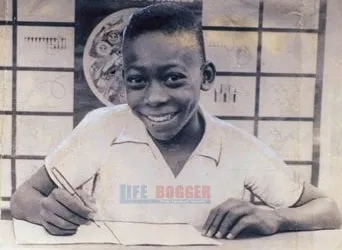
Pele’s Early Years.
He would smile even when disturbed. However, there were limits. These friends of his took advantage of his bad pronouncing ways.
Back then in school, Pele was used to pronouncing the name of his favourite local Vasco da Gama goalkeeper ‘Bile’ as “Pile”. His wrong way of pronouncing the name made his classmates mock him.
Hence, they decided to give him the nickname “Pele” with little knowledge of its implication for the football community.
In fact, his classmates never knew it was a golden name. The name was given out of a joke. A name that became the greatest, even greater than 99.9% of names the world has ever known.
According to an interview, Pele once said the name was initially a rubbish childhood nickname, which he didn’t like. When asked Why? This was what he said…
It was not a nickname I wanted as a child. My family called me Dico, my mates in the street called me Edson.
When they started to call me Pelé, I didn’t want them to. I thought it was a rubbish name. Now you even see it in the Bible.
In Hebrew, Pele means miracle. A theologian discovered this and then told me. Which means it’s there in the Bible.
“Back then, whenever someone called me ‘Pelé,’ it used to make me furious,” Pelé recalled. “I’d shout back at them in anger. In fact, there was one time I got so upset that I punched a classmate for calling me that, and it earned me a two-day suspension from school.”
What started as a teasing nickname during his youth would later become one of the most iconic names in football history. Yet, in his younger years, Pelé struggled with the name, not realizing that it would eventually represent a legacy of greatness.
This, predictably, did not have the desired effect. Other kids realised it annoyed me and so they started calling me Pele even more.
Then I realised that it wasn’t up to me on what I was called. Now I love the name – but back then, it wound me up no end.”
Pele Untold Biography Facts – The Boyhood Dream:

If not for the plane crash, the soccer world wouldn’t have known he existed.
Not many soccer fans know that Pele’s boyhood dream of becoming a pilot was cut short by an unfortunate incident when a local plane crashed close to his home, killing the pilot and all passengers on board.
The young Pele once left his home and went to the hospital to view the autopsy, and upon seeing the pilot’s corpse, he decided that his boyhood dream would cease. Indeed, a career in flying planes was not for him.
As luck would have it, his father’s nurturing trait extended to football as well, and Dondinho became Pele’s first professional football coach.
Pele recounts his mother’s support of his childhood ambition to become a professional pilot. He was not pleased seeing him taking football as a career.
Pele Biograph – Rising From Poverty:

His family was struck by poverty. Pele himself was never the affluent child. Back then, pocket monies given to him could not even afford a football.
As a boy, Pelé didn’t have the luxury of owning a real football. Instead, he made do with a sock stuffed with paper or, at times, kicked around mangoes during breaks. Money was scarce, so young Pelé had to take on various odd jobs to support his family.
Despite these humble beginnings, Pelé’s talent was undeniable. His father gave him his first soccer lessons, and he honed his skills playing for various amateur teams. It wasn’t long before Pelé realized he possessed a special gift for the game. He began developing his own style, which he perfected through indoor football, a growing sport in Brazil at the time.
Even as a child, Pelé dominated indoor football matches, showcasing his incredible dribbling, passing, pace, and goal-scoring prowess. His extraordinary abilities quickly propelled him into the spotlight, marking the beginning of his legendary rise to fame.
Pele Family Life – About his Dad:
Pele’s father, João Ramos do Nascimento, AKA Dodinho, was born on the 2nd of October 1917. He was Brazilian football attacking centre forward and was not just a father, but a mentor and best friend to his son, Pelé.
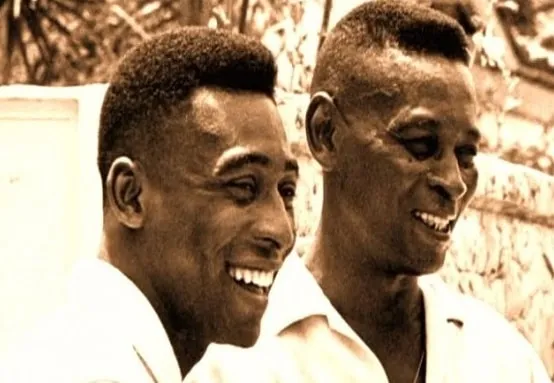
Pele (Left) and Father, Dodinho (Right).
Dondinho played for a number of small clubs during his career years.
Even though he didn’t make much impression like his son, he did something his son wasn’t able to beat in his legendary career. You’ll get to know that as you read through.
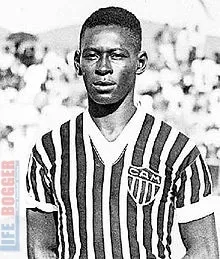
During Pelé’s playing days, football was not the lucrative career it is today. In fact, footballers were among the poorest professions in Brazil. Despite their talent and fame on the field, many players struggled financially.
Football was played more for the love of the game than for financial reward, and players often had to find other means to support themselves and their families.
Hence, Dondinho was poor. He retired early due to needing to make more money from other jobs.
After football retirement, Dondinho took the job of hospital cleaner, where he made extra cash to aid his son’s career.
More about Dondinho:
Dondinho taught Pele how to pass accurately, perform dribble arts, use shoulder feint to leave defenders for dead, and change pace quickly to outmanoeuvre defenders.
And over and beyond the technical aspect of football, Pele learnt something.
He learnt how to be a real man while spending time with his father. Young Pele derived joy and passion from the playful back-and-forth exchange he had with his father.
Moreover, he loved the way his father took his opinions seriously as if he were a man.
While Dondinho worked in the ward, he would reminisce about the famous players he had faced and talk about his own older brother, who had shown extraordinary promise as a footballer but died at 25.

Much of his career is incomplete. However, we do know that in roughly twelve years on the dirt football pitches of Brazil, Dondinho managed 893 goals in 775 games, excluding 19 in 6 games for Brazil.
Dondinho was a classic number 9, whereas his son Pele played as number 10. Pele opted for a deeper role where he could orchestrate attacks as well as come forward.
Now, this is the record. Dondinho once scored five goals with his head in one match.
Pelé had always aspired to beat this record but was never able to throughout his career. Dondinho headed goals still remains an unofficial world record and a feat that Pele himself could hardly believe.
When asked about it, Pele once said; “Only God can explain how my dad did that.”
Dondinho’s brilliance can only be expressed here as we have remembered him while writing about his Legendary son ‘Pele’. Dondinho lived for 89 years. He died on 16 November 1996 in São Paulo.
Pele Family Life – About his Mother:
Legendary Pele had an overprotective Mum named Mrs Celeste Arantes. She was once a maid before converting to a full-time housewife. It’s been said that behind every great man, there is a woman. In this case, it is a greater mother.

Meet Mrs Celeste Arantes. She is Pele’s Mum.
“My mother is a fantastic woman,” said Pelé. “She’s always cared about my family and my education, and she taught me how to respect people. She gave me the opportunity to learn how to respect people.”
They were very close, just as Pele was also close to his dad. Interestingly enough, his mother wasn’t always on board with little Pelé becoming a soccer player.
Dona Celeste, who always looked out for her children, saw soccer as both a “dead-end pursuit” and “a sure path to poverty.” She wanted Pelé to focus on his studies instead.

This is Pele, celebrating his Mum’s birthday.
She was like the angel sitting on Pele’s shoulders, always encouraging him to do the right, moral, constructive thing.
According to Pele, “In those early years, when she caught me playing soccer, she would give me a good verbal lashing. And sometimes much worse!”
Pele Relationship Life:
Pelé’s first marriage was to Rosemeri dos Reis Cholbi in 1966. The couple shared many years together and despite their love, they eventually parted ways.
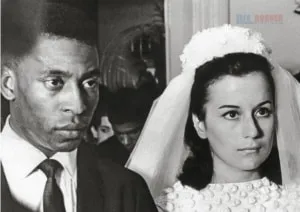
Pelé and Rosemeri dos Reis Cholbi were blessed with two daughters during their marriage. However, after years together, they divorced in 1982. Following the separation, Pelé was romantically involved with Xuxa, a young model whom he helped launch into stardom. Their relationship lasted from 1981 to 1986, and notably, Xuxa was only 17 years old when they began dating.
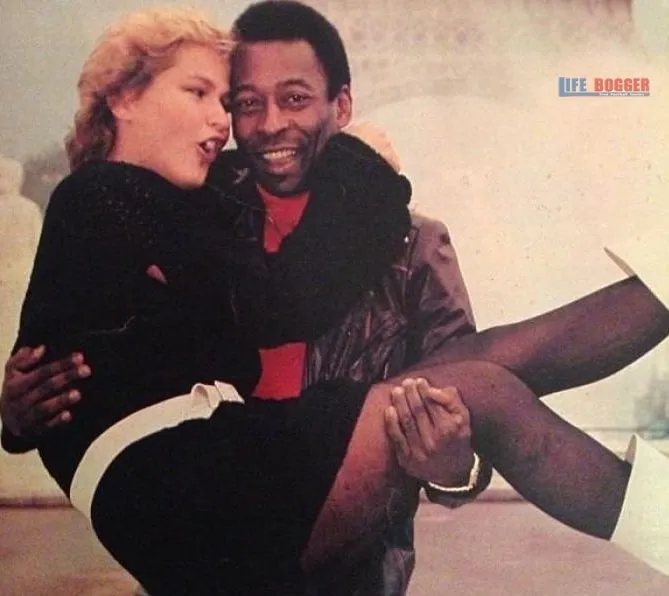
In 1994, Pelé married Assíria Lemos Seixas, a psychologist and gospel singer.
Pelé wiped away tears when he remembered his joyful past during his wedding with Assiria Seixas Lemos on April 30, 1994, in the coastal town of Recife, Brazil.
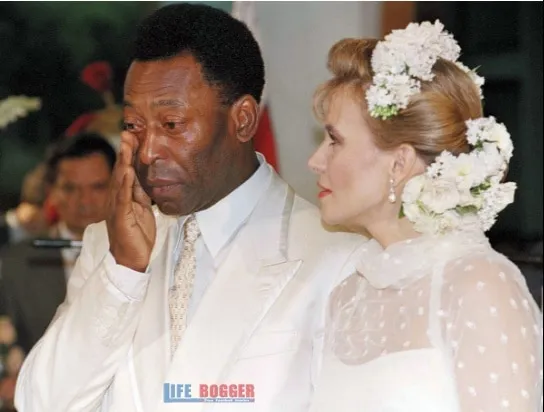
Over 170 state police officers were deployed to guard Pelé, his wife, and the 300 guests who attended their wedding at the Anglican Episcopal Church. It was the second marriage for both Pelé and his wife, and together they welcomed twins, Joshua and Celeste. Unfortunately, the couple separated in 2008.
In June 2016, at the age of 75, Pelé married Marcia Aoki, a businesswoman, in a small and intimate religious ceremony held in Guarujá, on the coast of São Paulo, Brazil. This union marked a new chapter in the legendary footballer’s personal life.
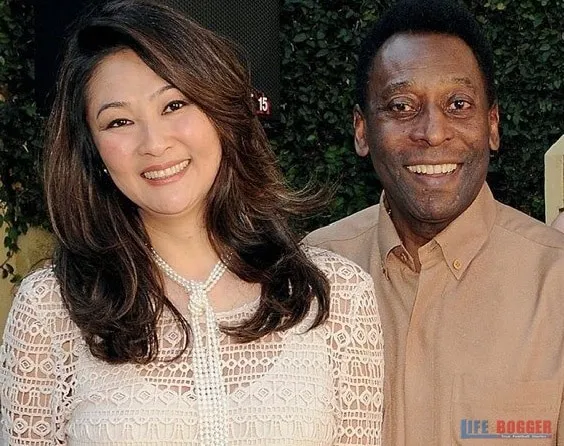
The retired soccer legend, Pelé, had been in a relationship with Marcia Aoki for six years before they decided to tie the knot. Their long-standing bond culminated in their marriage, marking a significant moment in Pelé’s personal life.
Lifestyle:
When it comes to lifestyle, some attributes of Pele can be felt. First, he loves posing for pictures. Below is a stylish Pelé posing in front of a Mercedes-Benz in 1970.
His flashy image was fitting, as his on-field play earned him the nickname “O Rei Pelé,” meaning “King Pelé.”
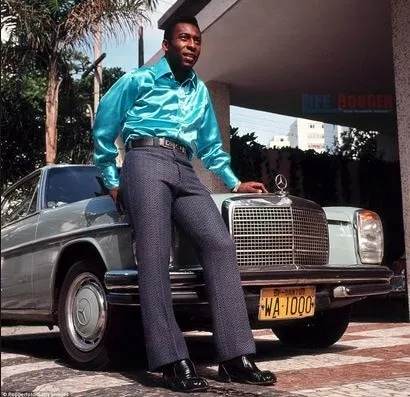
This is the kind of car Pele had during his career years.
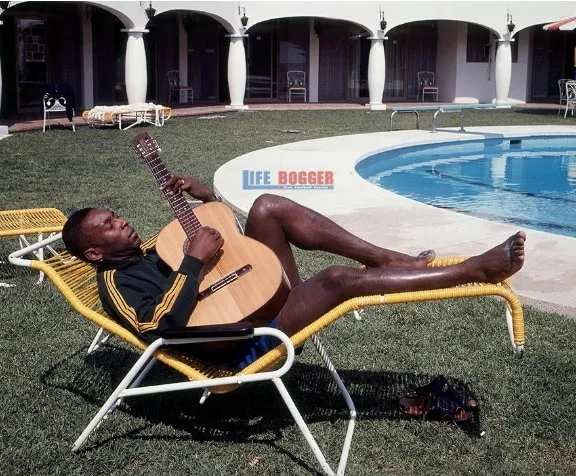
A Media Target & National Treasury:
Pelé smiles while washing in the bathroom in May 1963. He was a media target everywhere he went, becoming the most legendary footballer ever.
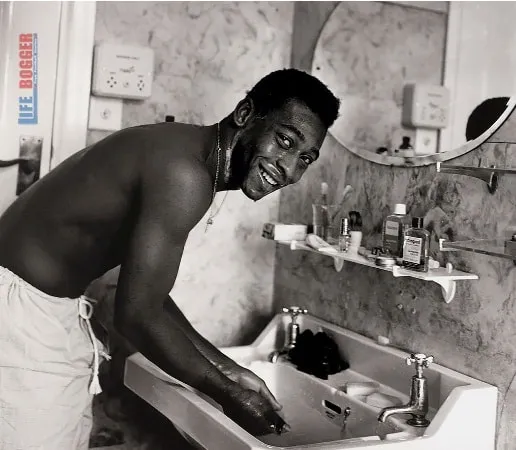
In 1961, the Brazilian government declared Legendary Pelé an official national treasure. Did you know?… The reason was to prevent him from being transferred abroad to play football.
Love for Neymar:
Pelé and Neymar share a close friendship that many admire. Neymar once shared that his life took a significant turn when Pelé, the legendary king of football, reached out to him. He advised Neymar to turn down a move to Chelsea, a moment that resonated deeply with the young player.
The two have been spotted playing together, showcasing their bond. Pelé has expressed great faith in Neymar’s potential, believing that with continued improvement, he has what it takes to surpass the incredible records set by Cristiano Ronaldo and Lionel Messi, Real Madrid’s all-time leading goalscorer and the Argentine football icon, respectively.
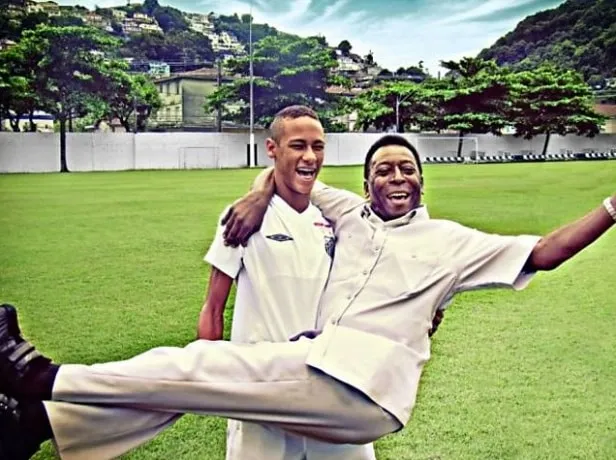
Pele Untold Biography – The Civil War Cease-Fire:
In order to keep the money rolling in, partly to pay Pele’s wages, partly to make money for the club from their prize asset, Santos toured the world playing high-profile friendlies at the expense of their domestic form.
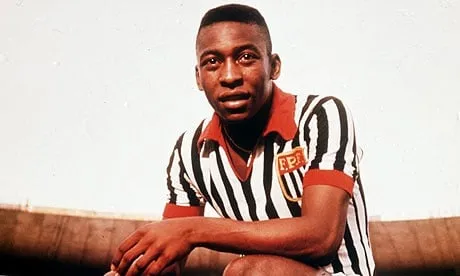
One friendly in Lagos, Nigeria, prompted the two factions in the Nigerian Civil War to call a 48 ceasefire so they could watch him play.
Both the Nigerian Federal and Biafran Rebel troops watched Pele play on a visit to their war-torn nation. Pele was amazed when he saw Nigeria for the first time.
Career Life:
Pelé signed with Santos FC at the young age of 15, joining a club that would later nurture talents like Angelo Gabriel, the legendary Robinho, and Deivid Washington.
He made an explosive entrance into professional football by scoring four goals in his league debut against FC Corinthians on September 7, 1956. Even as a teenager, Pelé showcased his remarkable talent, playing a pivotal role in leading the 1958 Brazil National Team to World Cup glory against Sweden at just 17 years old.
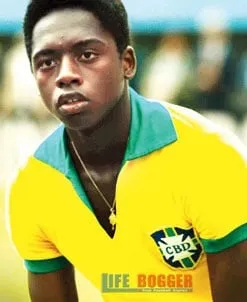
At just 17 years old, Pelé made history by becoming the youngest footballer to win a FIFA World Cup, scoring twice in the competition’s final against the host nation, Sweden.
His first goal, a stunning flick over a defender followed by a volley into the corner of the net, is considered one of the greatest goals in World Cup history. Following Pelé’s second goal, Swedish player Sigvard Parling remarked,
“When Pelé scored his fifth goal in that World Cup Final, I have to be honest and say I felt like applauding.”
It was during the 1958 World Cup that Pelé donned the iconic number 10 jersey, a number that would become synonymous with his legacy. In addition to his World Cup success, Pelé also showcased his talent in the South American Championship.
In the 1959 edition of the tournament, he was named the best player and finished as the top scorer with eight goals, helping Brazil secure a remarkable unbeaten run, although they ultimately finished as runners-up.
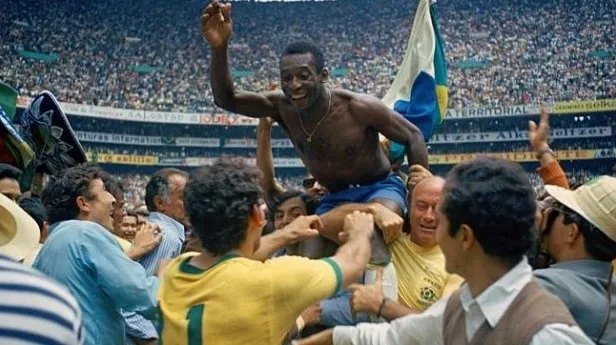
More Records:
A prolific goalscorer, Pelé was renowned for his exceptional ability to read the game, a gift that allowed him to anticipate opponents in the box. He consistently finished opportunities with both accuracy and power, making him a formidable threat on the field.
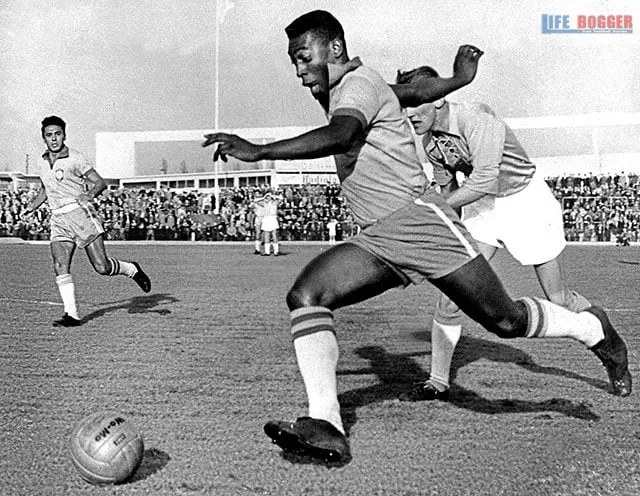
At Santos, November 19 is celebrated as “Pelé Day,” commemorating the anniversary of his remarkable achievement of scoring his 1,000th goal.
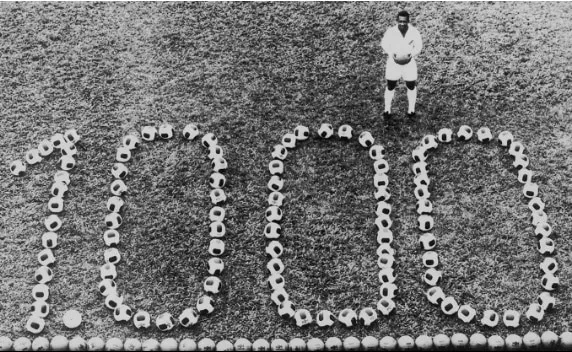
Pelé ranks fifth on the all-time World Cup goalscorers list with a total of 12 goals, making him the second highest-scoring Brazilian in the tournament’s history, just behind Ronaldo Luís Nazário de Lima.

Post-Retirement Facts:
Upon his retirement, J.B. Pinheiro, the Brazilian ambassador to the United Nations, remarked,
“Pele dedicated 22 years to playing football, and during that time, he contributed more to fostering global friendship and unity than any ambassador could.”
Throughout his remarkable career, Pelé achieved numerous scoring milestones. He recorded 92 hat tricks and scored four goals in a match 31 times, five goals on six occasions, and even netted eight goals in a single game.
Notably, many of Pelé’s spectacular goals came from bicycle kicks, showcasing his extraordinary skill and athleticism on the field.

Pelé achieved remarkable feats throughout his illustrious football career, scoring three or more goals in an astounding 129 matches. Over his career, he netted a total of 1,280 goals in 1,360 games, solidifying his place as one of the highest goal-scorers in football history.
He also holds the world record for the most hat tricks, with an impressive 92 to his name. Pelé famously dismissed penalties, stating, “A penalty is a cowardly way to score.”
In recognition of his contributions to the sport, Pelé was awarded an honorary British Knighthood in 1997. He served as Brazil’s Minister of Sport from 1995 to 1998, and in 1999, the International Olympic Committee (IOC) named him the Athlete of the Century. That same year, Pelé was inducted into the National Soccer Hall of Fame, further cementing his legacy as a football legend.
Pele Priceless Jersey:
During Pelé’s time with the New York Cosmos, his immense popularity among opponents was undeniable. So many players wanted to swap shirts with him after matches that the club had to provide a shirt for each opponent.
Gordon Bradley, one of the coaches at the time, recalled, “Pelé was the main attraction. Sometimes, we had to take around 25 or 30 of his shirts with us to a match—otherwise, we’d never have gotten out of the stadium alive.” This phenomenon highlighted Pelé’s status not just as a player but as a global icon in the world of football.
Pele Biography – Not a Friend to Maradona:
Pelé and Maradona were far from friends, often engaging in a public rivalry. In 2010, Pelé criticized the Argentinian, stating, “He is not a good example for the youth. In fact, Pele had the God-given gift of being able to play football, and that is why lots of fans felt he was lucky.”
Maradona quickly shot back, saying, “Who cares what Pelé says? He belongs in a museum.” Their contrasting views on football and each other have only fueled the ongoing debate about their legacies in the sport.
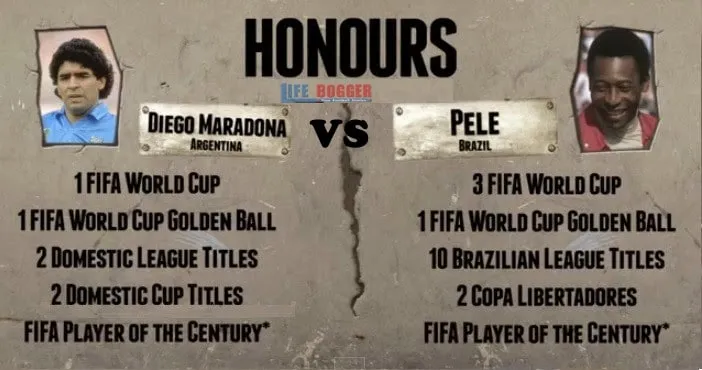
In 2006, Pelé addressed the ongoing debate over who is the greatest footballer, himself or Diego Maradona, stating, “For 20 years, they have asked me the same question.
All you have to do is look at the facts—how many goals did he score with his right foot or with his head?” This response highlights Pelé’s confidence in his accomplishments and his belief in letting the statistics speak for themselves.
UN Goodwill Ambassador:
As both a spokesperson and an athlete, Pelé championed an anti-drug campaign ahead of a match featuring football legends Diego Maradona and Michel Platini on May 23, 1988, in France.
His commitment to using his sporting platform for positive change reflects his dedication to promoting health and well-being in the sports community.
He used his fame to make a difference after soccer, serving as the United Nations ambassador for ecology and the environment.

The Brazilian legend has served as a UNICEF Goodwill Ambassador as well as a United Nations ambassador, dedicating his efforts to protecting the environment and combating corruption in Brazil. His influence truly extended beyond the football pitch, as he advocated for important social causes and strives to make a positive impact in his country.
Pele Video Game:
The legendary Pelé had a video game named after him in the 1980s called Pelé’s Soccer. This game, designed for the Atari 2600, is likely one of the oldest celebrity tie-in video games. Players could score goals across various locations in South America, capturing the excitement of the sport through Pelé’s legacy.
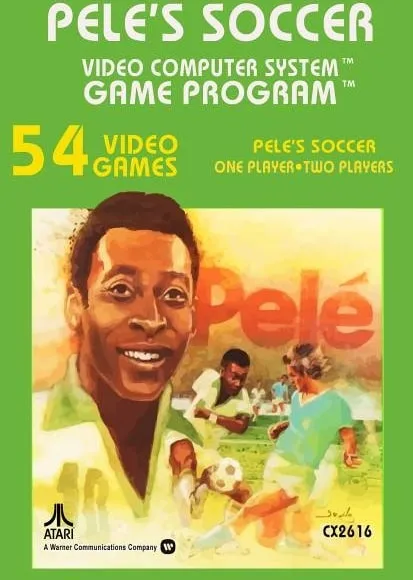
In playing it, you first start in the streets of Brazil and perform trick shots to outplay the goalkeeper. Then, travel to new neighbourhoods on your way to the big stadium.
Pele Story – Promoting His Boot:
As Pelé was getting ready to kick off during the Mexico ’70 World Cup, he signalled to the referee that he needed to tie his shoelaces. Cameras zoomed in on his Puma boots, which led to a significant surge in sales for the brand.
Thank you for taking the time to read this version of Pelé’s biography, celebrating a soccer legend admired by many, including greats like Roger Milla. If you notice any inaccuracies in Pelé’s story, please feel free to let us know in the comments!
